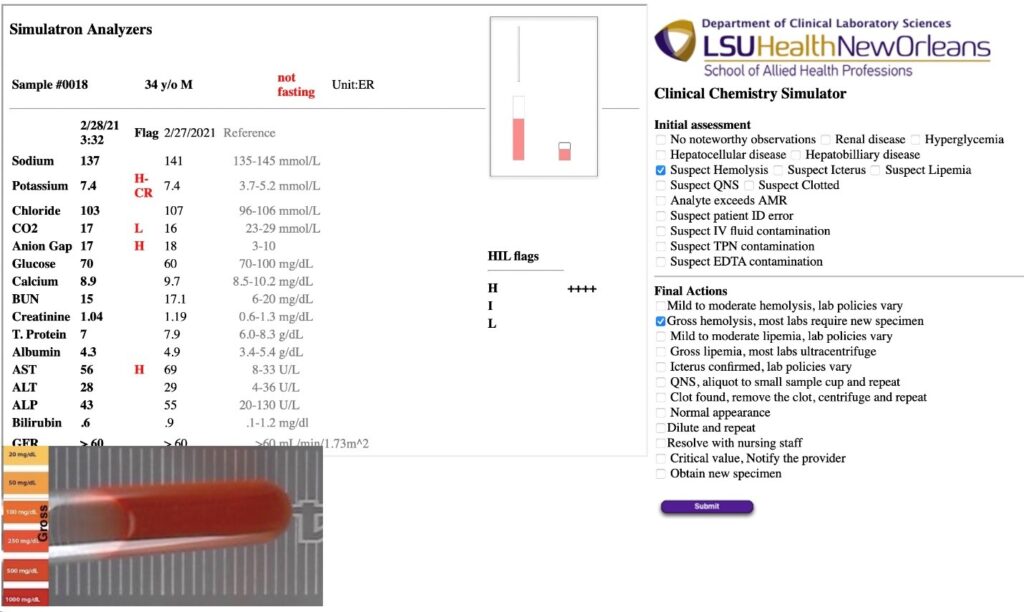Volume 36 Number 2 | April 2022
Daniel Haun, MLS(ASCP)CMH, Chemistry/Urinalysis Scientific Assembly

It would be a place to practice thinking pathways using all the didactic lessons about test principles, clinical conditions, interfering substances, modern therapies, and specimen collection issues. No “middle-ware” here; good performance would depend on “mind-ware” and the simulator would be a place to strengthen synapses.
The design uses patient data presented with a web-based interface. The student is challenged to provide interpretations and specific actions to take. There are the usual flags, reference ranges, and previous data for delta checking. Specimen images are provided for hemolysis, icterus, and lipemia confirmation. In practice mode, the student receives immediate feedback which is withheld in assessment mode.
The prototype has been built but has yet to be tested and so the question remains. Is there a role for simulators in the clinical chemistry curriculum? If you think, “yes” and want to help, comments and collaborators are welcome.
Daniel Haun is the Clinical Instructor/eLearning Developer for the Department of Clinical Laboratory Sciences at LSU Health Sciences Center in New Orleans, Louisiana.
Author Daniel Haun designed a prototype simulator for clinical chemistry curriculum. If you’re interested in helping to test the prototype, he welcomes collaborators.
